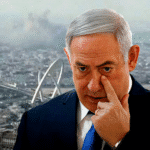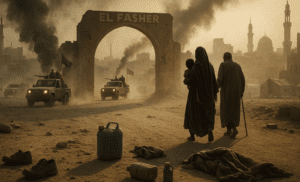An uneasy escalation is now under way in the waters and neighborhoods surrounding Venezuela. The United States, invoking counter‑drug authority, conducted naval strikes that killed at least 17 people aboard vessels allegedly trafficking narcotics. In turn, the Venezuelan government has moved to arm and train civilians as a defensive militia. What once might have been isolated confrontations now carry the risk of broader militarization, internal destabilization, and diplomatic rupture.
Strikes at sea: Drugs, sovereignty, and legal ambiguity
In early September 2025, the U.S. Navy destroyed at least three vessels asserted to be smuggling narcotics from Venezuelan waters, resulting in 17 reported deaths. On September 2, President Trump announced striking and sinking a Venezuelan-linked vessel and claimed it was operated by members of the gang “Tren de Aragua”. U.S. officials justified those actions as interdiction of drug traffickers; critics question whether the strikes respected international maritime law and Venezuela’s sovereignty.
The ambiguity of evidence is central. The U.S. has yet to publicly present proof that the targeted vessels indeed carried narcotics or posed imminent threat. To Venezuelan officials, the strikes are framed not as counterdrug operations, but as acts of aggression and “undeclared war”. Thus, the confrontation at sea becomes a symbolic opening salvo in a larger contest over jurisdiction, deterrence, and political legitimacy.
Arming the citizenry: From symbolism to force
In response to these U.S. operations, the Maduro government has accelerated efforts to arm and train civilians. The military has taken weapon handling drills into Caracas districts and other cities, instructing volunteers in basic firearm use, first aid, and resistance tactics. In Petare, a working‑class neighborhood, armed forces moved into the streets to teach civilians to handle weapons in groups of 30. State messaging links this to a “military revolution” involving both people and armed forces. Maduro in recent speeches has urged “millions” to be ready to pick up arms to defend Venezuela from what he frames as U.S. imperial aggression.
While some observers report mass mobilization claims, such as official numbers citing more than a million participants across military and civilian roles, on‑the‑ground turnout appears modest in many districts. The gap between state rhetoric and participation raises the question: Is this program intended more for spectacle and deterrent effect than for creating a deep militia force?
Implications: Escalation, internal fissures, and deterrence
First, the move toward civilian arming risks domestic destabilization. In a politically polarized country like Venezuela, distributing weapons among civilians can fuel factional violence or armed vigilantism, especially in poor neighborhoods already subject to crime or gang control. The state’s tight grip on militias may erode under stress or opportunism, turning tools of regime defense into sources of insecurity.
Second, the escalation raises the odds of miscalculation at sea or on land. If U.S. naval operations continue and civilians are in proximity, the risk of inadvertent crossfire, misidentification, or trigger responses heightens. A poorly disciplined civilian force could be drawn into direct skirmishes or mistaken for combatants under law of armed conflict norms.
Third, it reshapes regional diplomacy and legal norms. Venezuela now presents itself as a nation under siege, legitimizing its domestic militarization and appealing to external actors for solidarity. The U.S. risks being cast as aggressor in Latin American forums. Legal scholars may press on whether the U.S. strikes violate the UN Convention on the Law of the Sea or principles of nonintervention, particularly absent transparent evidence.
Finally, this may signal a shift in the logic of deterrence. The Venezuelan leadership is not merely signaling resolve but attempting to embed defense capacity into the civilian fabric of society. If successful, future U.S. operations might falter not only against naval targets but an increasingly armed populace. The psychological cost of escalation could outweigh the benefits of drug interdiction for U.S. policymakers.
A Final Note: A risky spiral ahead
What began as maritime strikes against suspected drug shipments may spiral into a broader confrontation in which civilians become paramilitary actors. Venezuela’s decision to arm and train its population is not just symbolic, it carries real danger of internal fragmentation, cross‑border incidents, and a new front in hemispheric tensions. The coming weeks will test whether deterrence is strengthened or a costly slide into conflict begins.














